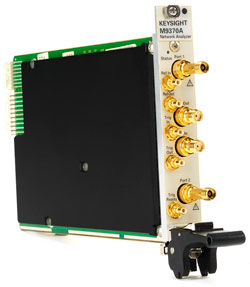
As silicon wafers, wireless devices and military systems continue to become more complex, multiport vector network analysis with S-parameters has become an indispensable tool. For those who work on the leading edge, an important trend has emerged. A few years ago, many needed vector network analysis with four-port capability. Then, a variety of next-generation products required eight-port measurements, and some manufacturers responded. The next generation needed 16-port capability and 32-port requirements are on the near horizon.
Along with this trend, many organizations are seeking to drive down the size of test with more capability per cubic inch in their test stations. This is a subset of the larger need to drive down the cost of test to help ensure ongoing profitability as prices erode in wireless communications or as business models change in aerospace and defense.
Across these industries and others, more system developers are choosing to shift a growing percentage of their capital-equipment budget to modular measurement hardware. System size will shrink whether they opt for a completely modular architecture or choose a hybrid modular/box-instrument approach. Although this will not necessarily reduce up-front costs, many expect the long-term cost of ownership to decline.
These intersecting requirements have led to the creation of a new class of vector network analyzers. Although they fit in just one slot, Keysight Technologies’ new M937xA Series PXIe VNAs are full two-port vector network analyzers with frequency coverage up to 26.5 GHz (see Figure 1). They perform fast, accurate measurements and reduce the cost of test by enabling simultaneous characterization of many devices—two-port or multiport—using a single PXI chassis.
Exploring emerging themes in testing
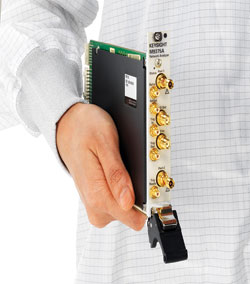
Figure 1 A new class of PXI VNAs offers full two-port capability—including a source—in a single slot.
Within the future needs described, three major themes have crystallized:
- The need to test highly complex devices in much less time without sacrificing accuracy
- The need to test multiple devices—and test in greater numbers—at a single test station
- The need to reduce the size of the test stations used to test multiple wafer sites or complex devices
Three types of user scenarios illustrate these needs and the desired solutions: implementing a multi-function tester, testing multiple devices or sites and testing complex multiport devices.
Many system creators have implemented multi-function testers within a single PXI chassis. As the chassis fills up, fewer slots are available to incorporate VNA capability. A one-slot PXI VNA is ideal for this situation—and that’s why Keysight’s engineers endeavored to create this compact solution.
On the production line or in a wafer fab, there is a growing need to test multiple devices or multiple wafer sites at a single test station. Examples include components for mobile handsets, military radios and increasingly dense silicon wafers. In such situations, one of the key needs is to reduce the overall size of the test solution. The ability to install multiple two-port PXI VNAs in a single chassis provides a tremendous space reduction when compared to using multiple benchtop analyzers on the production line or alongside a probing station (see Figure 2).
As devices become increasingly complex, there is a need to easily characterize a full set of S-parameters on a large number of ports—eight, sixteen, or more. Examples include RF front end modules (FEM), multiple-input/multiple-output (MIMO) antennas, smart antennas and phased-array transceiver modules.
Specifically, total characterization of a FEM used in mobile handsets requires S-parameter measurements on ten or more ports. In addition, full N-port correction is needed to ensure accurate results.
Those developing MIMO antennas need to investigate antenna mutual coupling, which can affect system performance. They can do this through channel measurements which entails simultaneous S21 measurements for all combinations of transmit and receive antennas. Full N-port correction is also needed here to ensure accuracy.
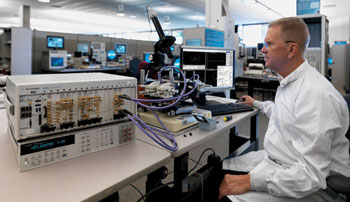
Figure 2 Adding a pair of two-port PXI VNAs to an existing test station enables powerful device characterization without expanding system height or footprint.
Whether the focus is on multi-site testing or characterization of multi-port devices, it should be easy to reconfigure a set of modules in a single chassis into arbitrary groups of N-port VNAs. For example, a single chassis containing sixteen two-port VNAs could be configured as eight four-port VNAs, four eight-port VNAs or one 32-port VNA.
Comparing Approaches
In multi-site testing, today’s typical solutions use either a VNA with a switch matrix or multiple stand-alone VNAs. Compared to using a switch matrix, a PXI-based approach created around one-slot PXI VNAs can enable faster throughput with the ability to make simultaneous measurements on differing numbers of ports, at different frequency ranges, or with segmented sweeps (e.g., power level, IF bandwidth, etc.) optimized for speed and accuracy. Compared to using multiple VNAs, the compact PXI VNA has a few key advantages: lower total cost; smaller footprint and shorter height; and closer placement relative to DUTs or handler stations. Additional advantages include easier scalability when more ports are needed and the ability to add signal analysis, signal generation, and more, in open slots.
For multiport testing, the available solutions are based on either a multi-port VNA or VNA plus a switch matrix. Compared to a typical multiport VNA, the one-slot PXI VNA offers more flexibility in frequency range, and this can mean lower up-front cost and simpler upgrades when moving to higher frequencies. The PXI VNA also offers greater flexibility in port count, letting the system creator add ports in increments of two rather than four, which is common with box VNAs. This level of flexibility also translates into greater uptime: if a module fails, it can be easily removed and replaced.
Compared to a switch-matrix solution, the PXI-based approach has the same advantages in throughput and size described previously. In addition, the use of multiple two-port VNAs typically provides higher performance in terms of dynamic range and directivity by eliminating the signal degradation that can be caused by cascaded external switches.
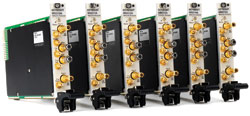
Figure 3 The family provides consistent speed and performance across a choice of six frequency ranges.
Compact Test Solutions
Until very recently, when limited VNA capabilities became available in the PXI form factor, the default frame of reference—for manufacturers and end users—was benchtop instruments. Over the years, Keysight has enhanced many of its benchtop VNAs with capabilities that increased the number of ports that can be measured simultaneously. The downside: solutions that require more than eight ports often become unwieldy in terms of size, cabling, complexity and power consumption.
The one-slot PXI VNA puts full two-port capabilities in a device that is just 3.75" × 7" × 0.75" (95 × 178 × 19 mm). The single-slot package contains a surprising amount of performance in terms of speed, trace noise, stability and dynamic range. The foundation of that performance is a combination of proven, high-performance components and a pair of high-density circuit boards.
Six models are available, reaching from 300 kHz to 4, 6.5, 9, 14, 20 or 26.5 GHz (see Figure 3). This enables system creators to purchase the frequency coverage they need now and easily upgrade it in the future.
Of course, calibration is the other key to accurate, repeatable S-parameter characterization. The PXI VNA uses the same measurement science and the same proven, trusted calibration routines found in Keysight’s PNA family of microwave network analyzers: through-reflection-line (TRL), short-open-load-through (SOLT) and specialized calibration routines. In addition, the PXI VNA offers guided calibrations, full multiport calibration capability and is compatible with Keysight’s electronic calibration (ECal) kits as well as mechanical calibration kits.
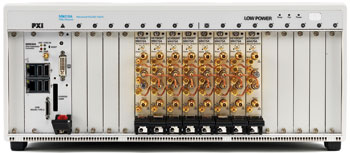
Figure 4 This versatile multiport configuration uses sixteen two-port PXI VNAs in a single chassis.
Flexible Combinations and Configurations
All of these capabilities can be configured to satisfy the range of scenarios described earlier: a one-slot, two-port VNA for a compact multi-function tester, up to sixteen two-port VNAs in a single chassis, or cascaded modules that create a flexible combination of multiport VNAs in one chassis (see Figures 4 and 5).
If necessary, multiple PXI chassis’ can be connected and synchronized to enable even greater test capacity in a small footprint. For these configurations, each chassis must have its own embedded controller to manage measurement activity, data reduction and data transfers. In all cases, larger port counts will benefit from a more powerful embedded controller in the chassis.
Measurement functionality is scalable through a range of software options. At introduction, optional capabilities include time-domain analysis, N-port calibrated measurements and advanced fixture-simulator capabilities.
The PXI VNAs also provide a graphical user interface that shares the familiar look and feel of Keysight’s benchtop PNA family. This eases the transition to PXI for benchtop users developing solutions in R&D or manufacturing.
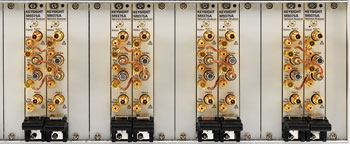
Figure 5 This multi-site configuration example includes a quartet of independent four-port PXI VNAs in a single chassis.
Gaining a Meaningful Edge
Whether end users are testing active or passive devices, the right mix of speed and performance in vector network analysis provides a meaningful edge in today’s highly competitive industries. Increasingly, business requirements also dictate the need for greater flexibility and a smaller physical footprint. The new class of one-slot, two-port PXI VNAs offers choices in form factor and flexibility that address present and future needs in aerospace, defense, wireless communications and semiconductors.
Keysight Technologies Inc.,
formerly Agilent Technologies electronic measurement business
Santa Rosa, Calif.
www.keysight.com/find/pxivna
